The Newport Architecture Tour Map
Newport Rhode Island was founded in 1639 when a freshwater spring was discovered near a protected deep-water harbor just off the Atlantic Ocean. Unlike other colonies, such as nearby Massachusetts, the colony of “Rhode Island and Providence Plantations” enjoyed tremendous religious freedom. This was thanks to the Rhode Island Charter negotiated by Baptist minister, John Clarke, in 1663. Because of this charter, the settlement became famous for welcoming people of faiths not welcome elsewhere (like Jews and Quakers) who thrived in business and made the community among the most successful in The American Colonies. The oldest religious building (The Quaker Meeting House 1699) and the oldest synagogue in North America (Touro Synagogue 1763) are two buildings that remain has symbols of this period.
The settlement of Newport grew to be the fifth largest city in the American Colonies by 1776 and many of the buildings from that period of early prosperity still exist in the neighborhoods now known as “The Point”, “Historic Hill”, and “Washington Square“.
Here is a compact architectural tour with brief descriptions and histories of the various buildings to help visitors and residents alike better know and appreciate these Colonial Era treasures.
HISTORIC NEWPORT WALKING ROUTE
1 – Quaker Meeting House
- Earliest surviving religious structure in New England and a result of the religious freedom available in colonial Newport.
- The Society of Friends believed in a “plain style” of living. This was reflected in the way they dressed, the way they spoke, the homes where they lived, and the meeting houses in which they worshipped.
- During the first few decades of the eighteenth century, it was the largest and most recognizable building in town, and throughout the 1700s it appeared as a landmark in maps and painted landscapes of Newport.
- Late medieval form, great field stones used as foundation, the rare, diamond-paned, leaded windows, and with a few archaeological traces of accordion lath, interior surfaces, and fragments of its structural hewn timber-framing system.
- Unique system of moveable walls or shuts that made interior space expandable for the mass attendance.
With the Quaker population having largely left Newport, the building is now operated by the Newport Historical Society.
2 – White Horse Tavern
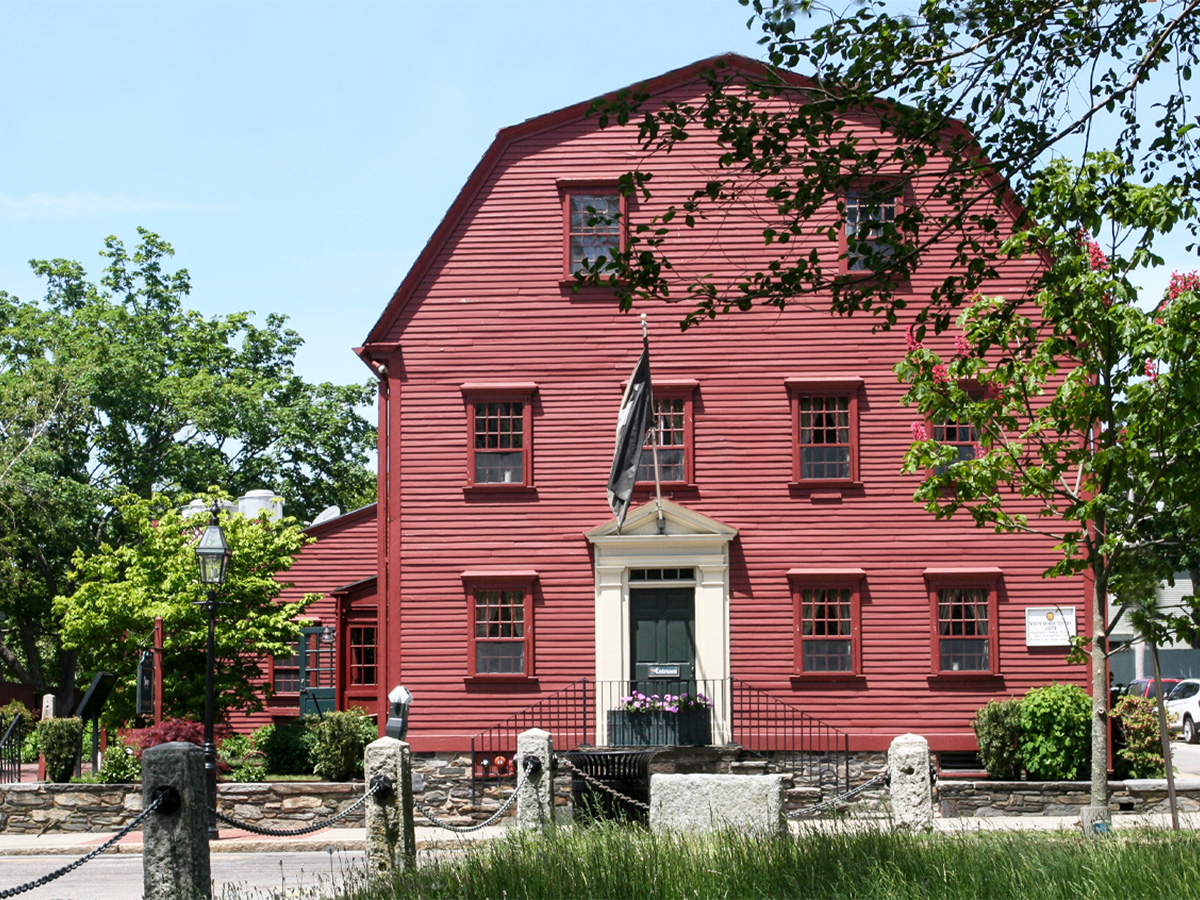
White Horse Tavern (Before 1673)
- No building is believed to be more typical of colonial Newport than the White Horse Tavern, with its clapboard walls, gambrel roof and plain pediment doors bordering the sidewalk. Inside, its giant beams, small stairway against the chimney, tiny front hall and cavernous fireplaces are the very essence of 17th century American architecture.
- The interior is a two-room structure with a central pilastered chimney, framed by bulky timbers.
- For almost 100 years, this large and comfortable tavern was the meeting place of the Colony’s General Assembly, Criminal Court, and City Council.
- More refined Georgian-federal sensibility of pedimented doorways, classical moldings, and sash windows.
The White Horse Tavern is the “oldest operating restaurant in the U.S.” and is acknowledged as the 10th oldest in the world, having served guests since 1673. It is also recognized on the U.S. National Register of Historic Places on February 23rd, 1972.
3 – Wanton-Lyman-Hazard House
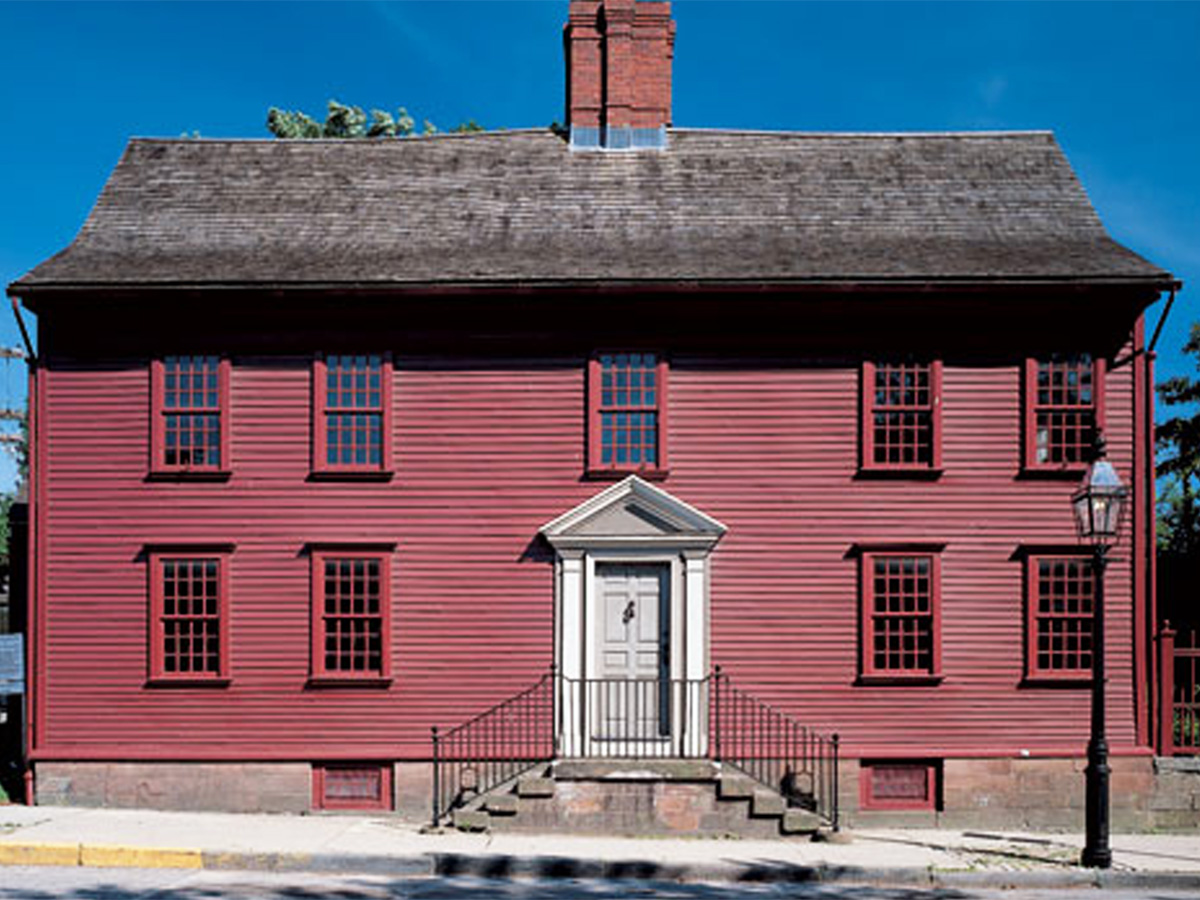
Wanton-Lyman-Hazard House ) (Stephen Mumford, Before 1699)
- Believed to be the oldest surviving house in Newport, the Wanton-Lyman-Hazard House was a Georgian Dwelling Style home built for Stephen Mumford ca.1697.
- He later received an addition and Georgian Style renovations like the pedimented door surround.
- A steeply pitched roof, massive, pilastered chimney & cornice and exposed, chamfered beams and braces.
- The house grew with each generation of residents. Originally it was built with a single room on each side of a central chimney. It was a full two stories with a garret. Sometime before 1725, a lean-to kitchen was built at the northeast end of the house.
- It is a truly vernacular house, with each modification based upon the background of the owner, the needs of his family, the simplicity of a Quaker dominated town, and the formal architectural influences of a commercial and cosmopolitan entrepot like Newport.
- Emblematic of the colonial balance between functionality and formality, this house was designated a National Historic Landmark on October 9th, 1960.
4 – Army and Navy YMCA
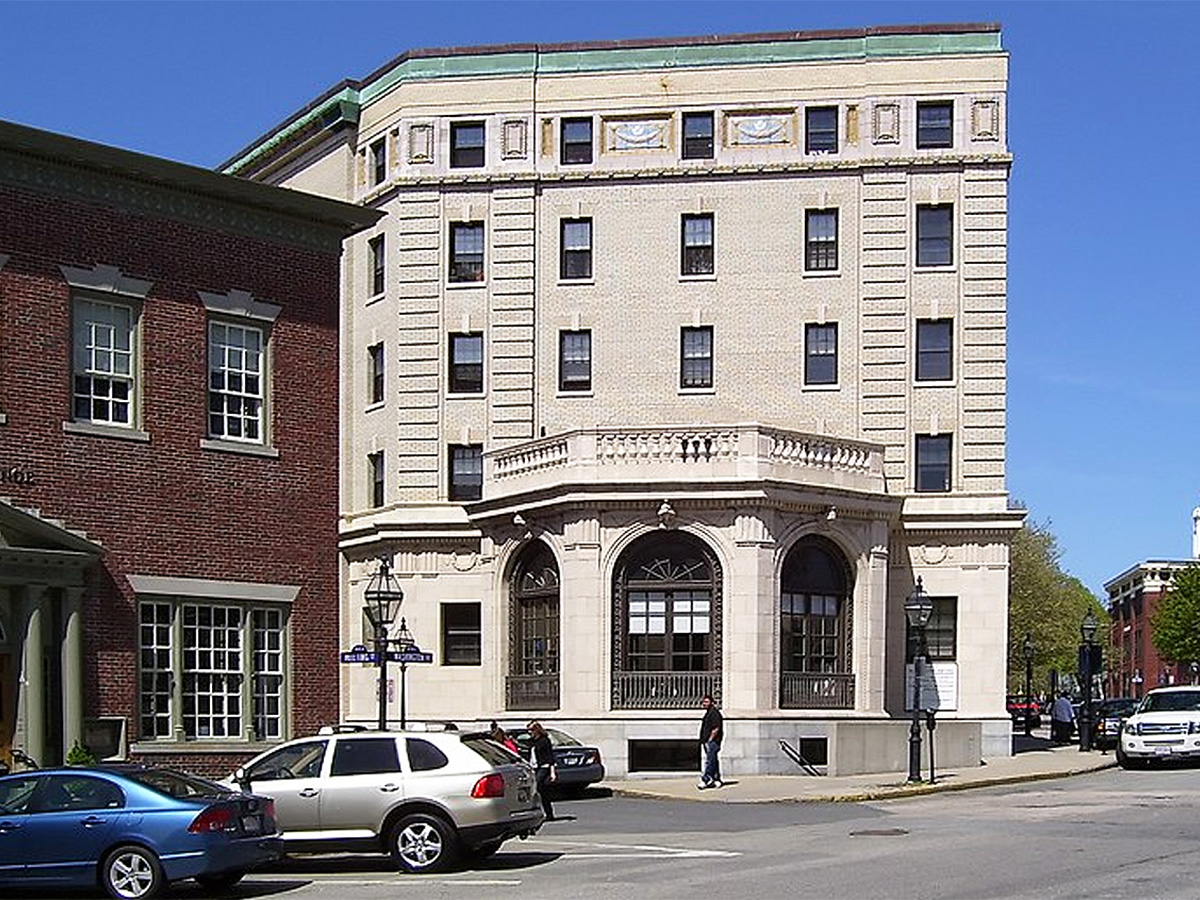
Army and Navy YMCA (Louis E. Jallade, 1911)
- Army and Navy YMCA are a five-story concrete, masonry, and brick building
- The building stands as an important local expression of the Beaux-Arts architectural style which embodies distinctive design elements of that style executed with fine craftsmanship
- YMCA building derives historical significance through its associations with a major social reform movement in the twentieth century; with noted philanthropist Mrs. Thomas J. Emery, the building’s benefactor; and with the impact of a military presence on Newport’s history.
- The YMCA closed after the Navy significantly reduced its presence in Newport in 1973. The building now serves as low-income housing.
The building was listed on the National Register of Historic Places in 1988.
5 – Colony House
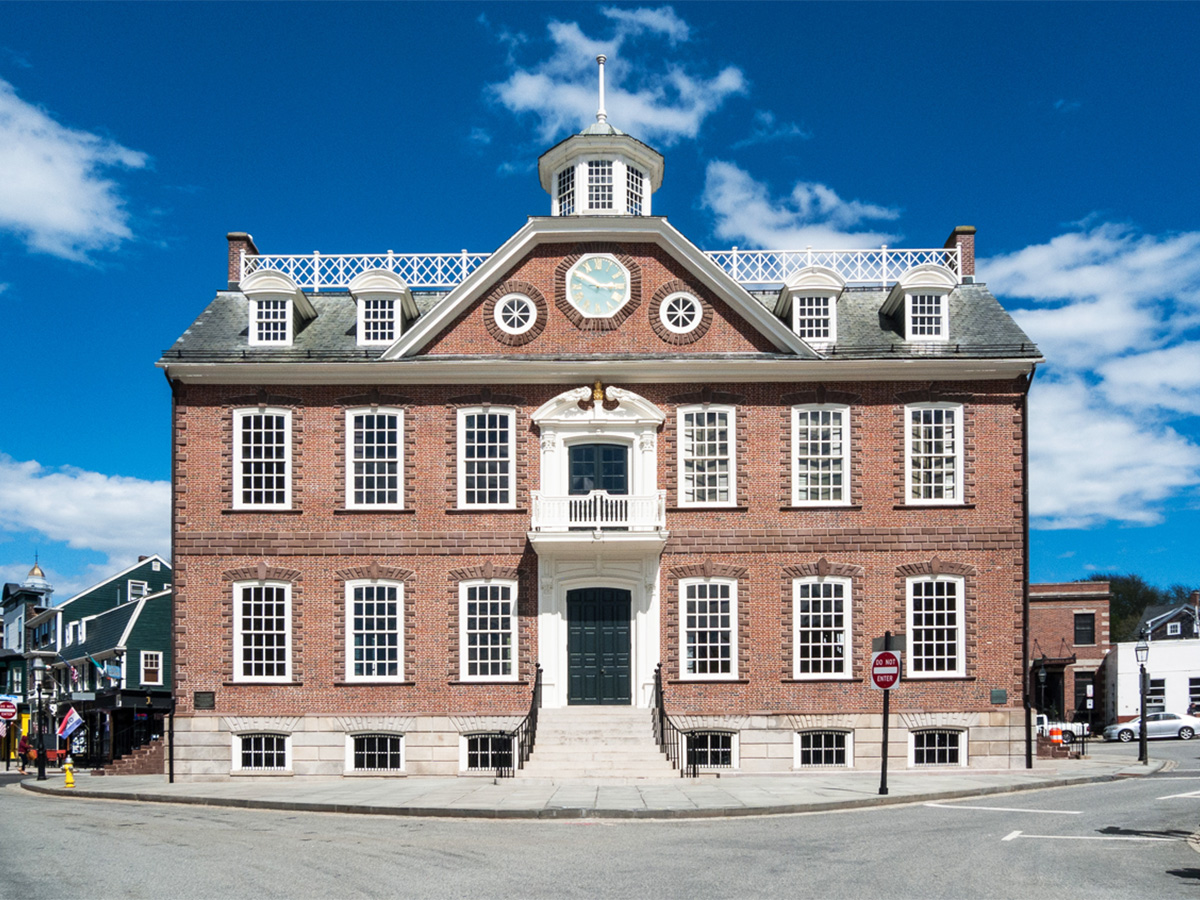
Colony House (Richard Munday, 1739)
- The Newport Colony House is among the oldest statehouses still standing in the United States.
- The design of the Colony House is derived from the English Georgian style, its floor plan follows the customary layout of English town or guild halls, which often had an open marketplace on the ground floor and civic offices on the second floor.
- Considered as an idiosyncratic provincial masterpiece, combining a medley of details of Jacobean Style.
- Stone stairs in 1776 was where the Declaration of Independence was first read to the Newport community and this tradition continues to this day
The building was designated a National Historic Landmark on October 9th, 1960, among the first buildings in the United States to be so designated.
6 – Newport Spring Park
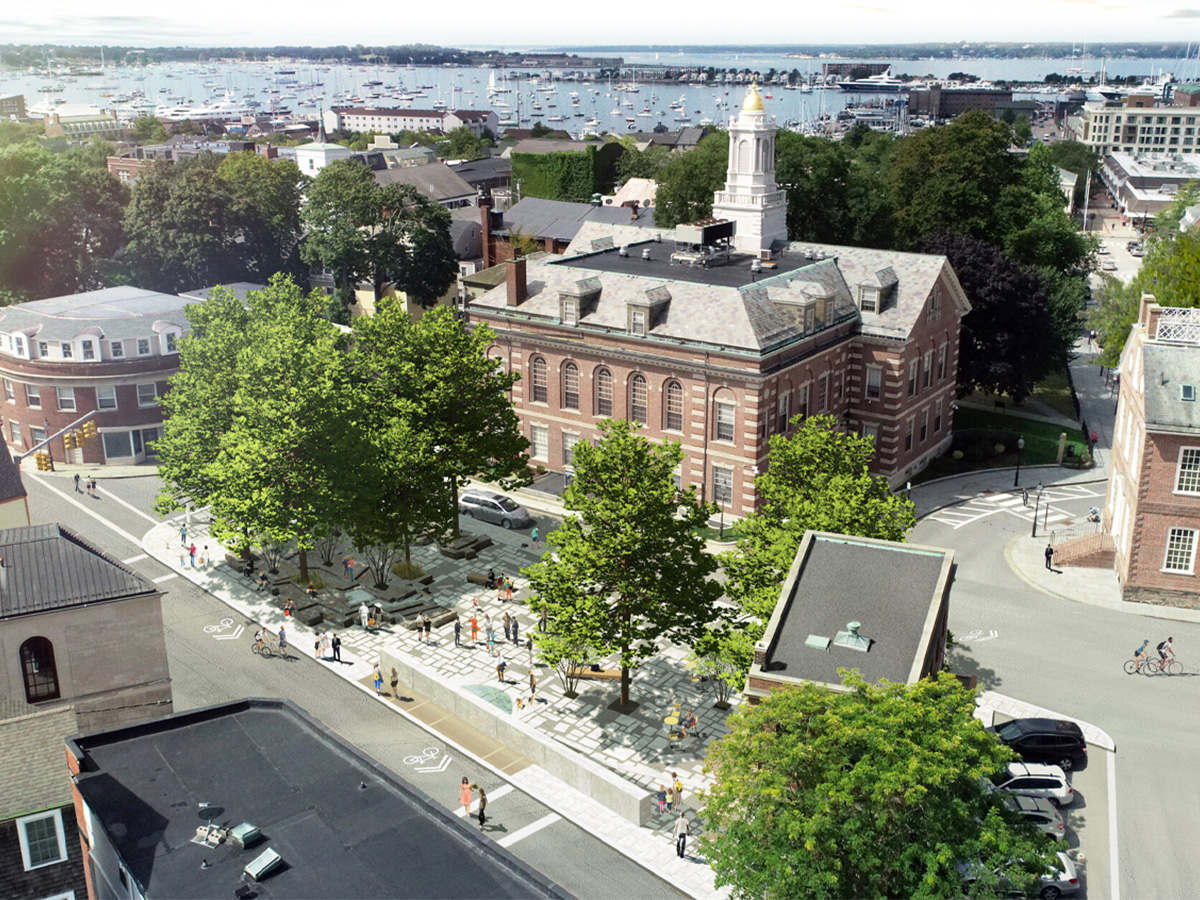
Newport Spring Park (Place Studios & LIRIO, 2024)
- Newport’s colonial settlement in 1639 centered on the area between a freshwater spring and the ocean harbor. The city was founded on the premise of religious freedom and tolerance based on the Rhode Island charter of 1663.
- This central source of water eventually became the city’s transportation center.
- This new park will offer traffic and pedestrian circulation and safety improvements in this complicated intersection.
- It is designed to be a sustainable community-based design that will foster cultural and economic vitality with open space that provides new opportunities for public access and civic enjoyment in perpetuity, with a great historical connection.
This park has been a ten-year effort which finally opened in the spring of 2024
7 – Touro Synagogue

Touro Synagogue (Peter Harrison, 1759-63)
- For the building’s exterior, Harrison drew on his knowledge of and enthusiasm for Palladian architecture. This is one of Harrison’s works that has been largely unchanged by later renovations or additions.
- The Newport Synagogue, dedicated on the first night of Hanukkah, December 2, 1763, is now thought to be one of the ten most architecturally significant buildings of 18th century America.
- 12 major columns on the interior symbolizes the 12 tribes of Israel & the congregation installed a trap door at the centered of its raised platform.
- In 1820, Abraham Touro had a brick wall built around the cemetery, and when he died in 1822, he bequeathed $10,000 to the State of Rhode Island for the support and maintenance of the “Old Jewish Synagogue” in Newport.
For the past 75 years, Touro Synagogue has held a public reading of the George Washington letter as a celebration and pronouncement of religious freedom. It was designated on the National Register of Historic Places on October 15th, 1966.
8 – William Vernon House
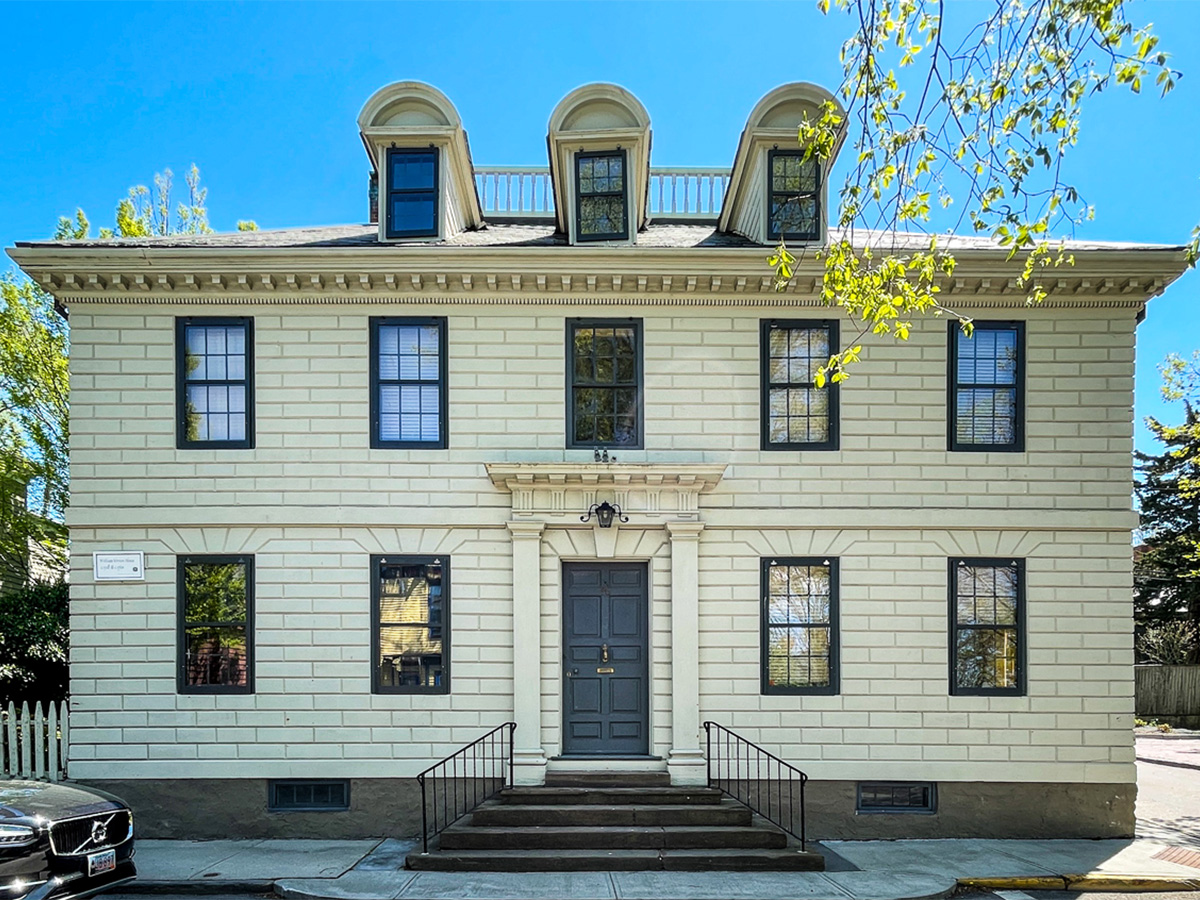
William Vernon House (Peter Harrison, c. 1760)
- The Vernon House is a historic Georgian-style colonial era house.
- The William Vernon House is one of the most historically significant buildings in Newport and is thought to be the work of Peter Harrison.
- The Vernon House hosts contemporary dialogue, community engagement, and a preservation learning lab and part of the Newport Restoration Foundation portfolio.
- One of the most remarkable features of Vernon House is a series of Chinoiseries panels in the Great Room.
- During the American Revolutionary War, Vernon House served as the headquarters of the Comte de Rochambeau, commander of the French forces stationed in Newport 1780-1783.
The house was added to the National Register of Historic Places on November 24t h 1968 and designated a national historic landmark on November 24th, 1968.
9 – Newport Artillery Company

Artillery Company of Newport (1741)
- The Newport Artillery Company was chartered in 1741 by the Rhode Island General Assembly during the reign of King George II of Great Britain.
- The Newport Artillery Company is the oldest military unit in the United States
- The Newport Artillery Company operates under charter and maintains as a museum in its historic armory.
- Members of the Newport Artillery served in the French and Indian Warand was led by elite members of the community. Its first commanding officer was Captain Jahleel Brenton (1691-1767).
- The company regularly operates and fires its four canons made by Paul Revere.
The Artillery Company of Newport was added to the National Register of Historic Places on June 30th, 1972.
10 – Clarke Street Meeting House
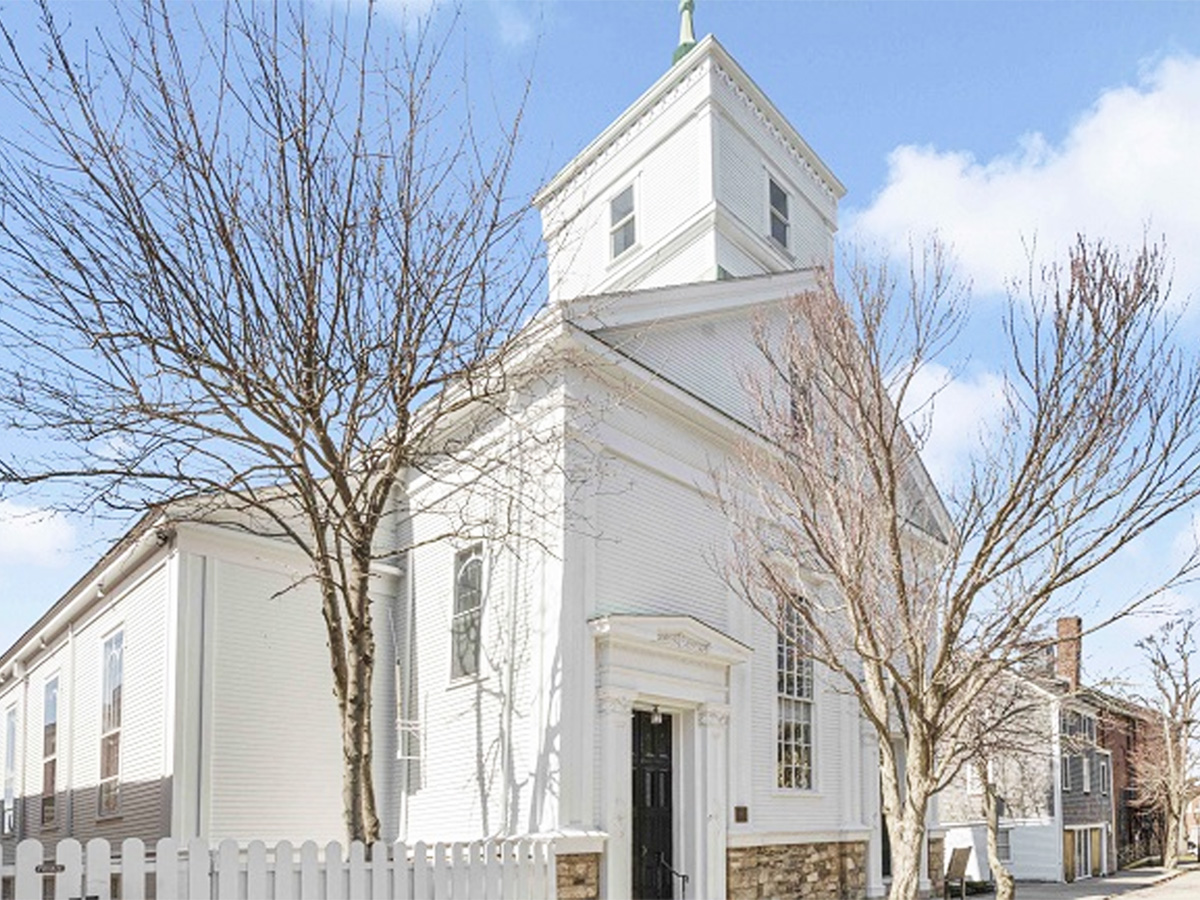
Clarke Street Meeting House (Cotton Palmer, 1735)
- The Clarke Street Meeting House, also known as “Second Congregational Church Newport County or Central Baptist Church”.
- From 1755 to 1786, Ezra Stiles pastored the church and lived across the street in the Ezra Stiles House. He later became the president of Yale College.
- In 1950, St. Joseph’s Church of Newport purchased the meeting house and further renovated the structure.
- Around the 1980s, the structure was converted into condominiums.
The house was added to the National Register of Historic Places on January 25, 1971, and designated a national historic landmark on November 24th, 1968.
11 – Ezra Stiles House

Ezra Stiles House (c, 1756)
- Ezra Stiles House is a large 2-1/2 story wood frame structure, five bays wide, with a gambrel roof and two large interior brick chimneys.
- The house was originally built facing south and was rotated on its lot to face west in 1834, at which time its entry was given a Greek Revival surround.
- The house was to Rev. Ezra Stiles, later president of Yale University.
- Stiles lived in the house while serving as a minister for 20 years at the Second Congregational Church on Clarke Street.
- Stiles owned an enslaved boy that he acquired through an investment in a slaving expedition. Stiles freed his slave when he left Newport to serve at Yale in 1777.
The Ezra Stiles House was added to the National Register of Historic Places on March 16, 1972.
12 – Brick Market

Brick Market (Peter Harrison, 1772)
- It originally functioned as an open-air market with merchants and offices that contained a public assembly hall or storage space on upper floors.
- Generally regarded as New England’s first professionally trained architect, Peter Harrison (1716-1775) studied architecture in England and participated in a tour of Italy, which gave him greater fluency in Palladian classicism than any other builder or designer in eighteenth-century New England.
- The location of the Market House follows a pattern seen in other large coastal communities, namely that it was placed close to the harbor and wharves to receive goods that were more easily shipped by water than by land in the era before railroads.
- The building’s rectangular plan, three-bay width and arcaded first story with monumental engaged Ionic pilasters superimposed on a basement course of arches emulated Inigo Jones’ Royal Banqueting Hall. The building’s classical exterior is among the finest of its type surviving in New England. The building’s design is organized as an arcaded basement that serves as a plinth for a two-story colonnade of wooden Ionic pilasters that rise to a wide entablature at the eaves.
This building became designated as a National Historic Landmark on October 9th, 1960.
13 – Long Wharf
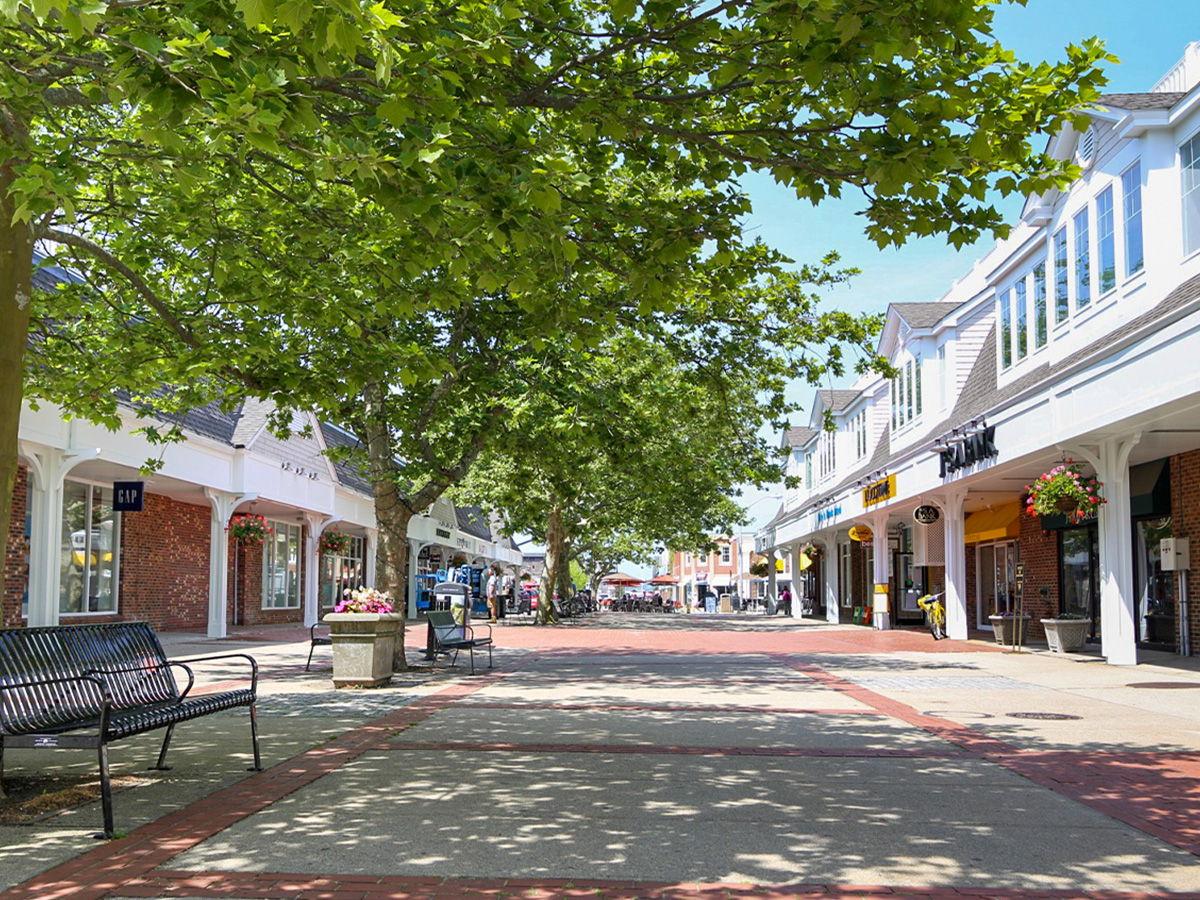
Long Wharf Mall & Street (1968)
- When Newport was first founded in 1639 it was settled based on two critical characteristics: a well-protected harbor just off the Atlantic Ocean; and a freshwater spring located just inland.
- From this location a long dock was built out into the Narragansett Bay off to a rocky point of land. This dock became known as Long Wharf and formed the central east-west axis of the Newport Settlement.
- This street has many important buildings from Newport’s history along it including the Brick Market and Colony House.
- In 1968, the Pell Bridge was completed, and America’s Cup Boulevard was bulldozed through the historic heart of the city, as well as the Long Wharf, in a fit of urban clearance design miscalculation, was turned into a pedestrian shopping mall and planted with trees and planters, thereby blocking the view and natural passage from Washington Square to the waterfront.
- Now a proposal has come before the Newport City Council to revitalize the Long Wharf area by restoring the traditional character to the street as it benefited from the founding of Newport until the closing of the street in 1968.
14 – Christopher Townsend House

Christopher Townsend House (c.1725)
- The point section of Newport was largely settled by Quakers who were unwelcome in many other places at the time.
- This is one of 7 houses built by the Townsend and Goddard families of cabinetmakers with their attached shop largely intact, this is the oldest still standing.
- A square half house with gable-on-hip roof and slightly off-center chimney, it has a fan-lighted and pedimented corner door.
- Original details throughout including handcrafted mantel panel above one of the five center-located brick fireplaces. Grounds include a 19th century-designed English garden.
- A single mahogany secretary bookcase crafted by Christopher Townsend in 1740 sold at auction in New York City for $8.25 million-a record for a piece of American furniture at auction as their pieces are extremely rare and valuable.
15 – Hunter House
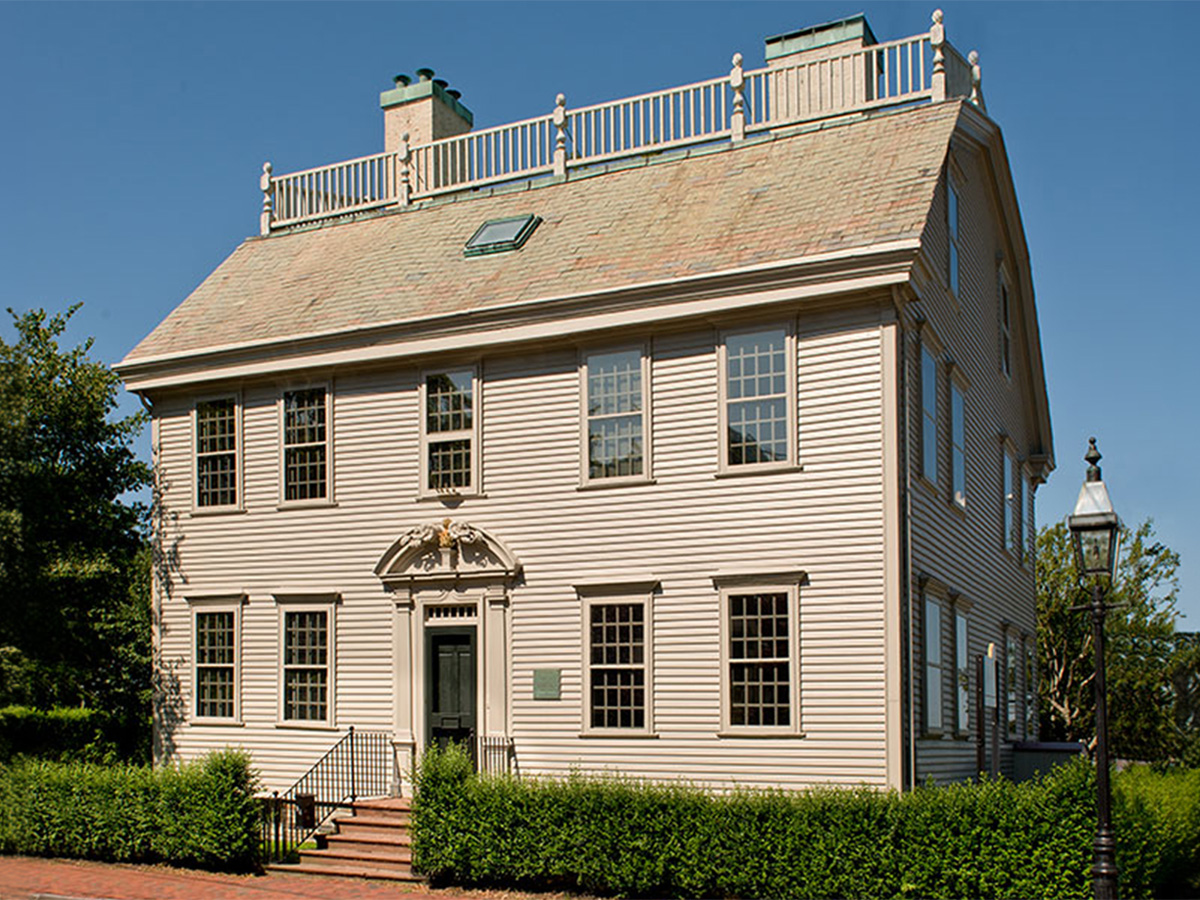
Hunter House (c.1720)
- This is one of the finest examples of Georgian Colonial architecture from Newport’s Colonial Era.
- This large 2½-story house has a balustraded gambrel roof and heavy stud construction.
- It was slated to be destroyed and the interior construction sold to the metropolitan museum of art. The Preservation Society of Newport was founded in 1945 to prevent the destruction of the building.
- Wanton enlarged the house by adding a south wing and a second chimney, transforming the building into a formal Georgian mansion with a large central hall.
This building became designated as a National Historic Landmark on November 24, 1968..
Ross Cann, RA, AIA, LEED AP, is an author, historian, teacher and practicing architect living and working in Newport, RI. He holds degrees in Architecture and Architectural History from Yale, Cambridge, and Columbia Universities. He is a Leadership in Energy and Environmental Design Accredited Professional.
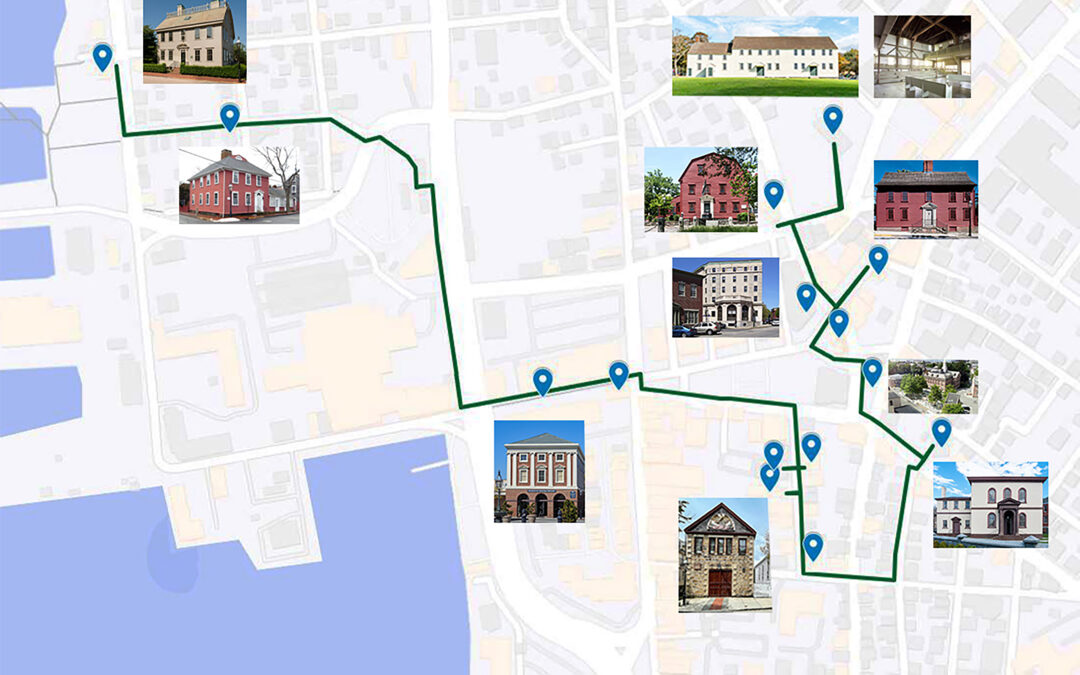
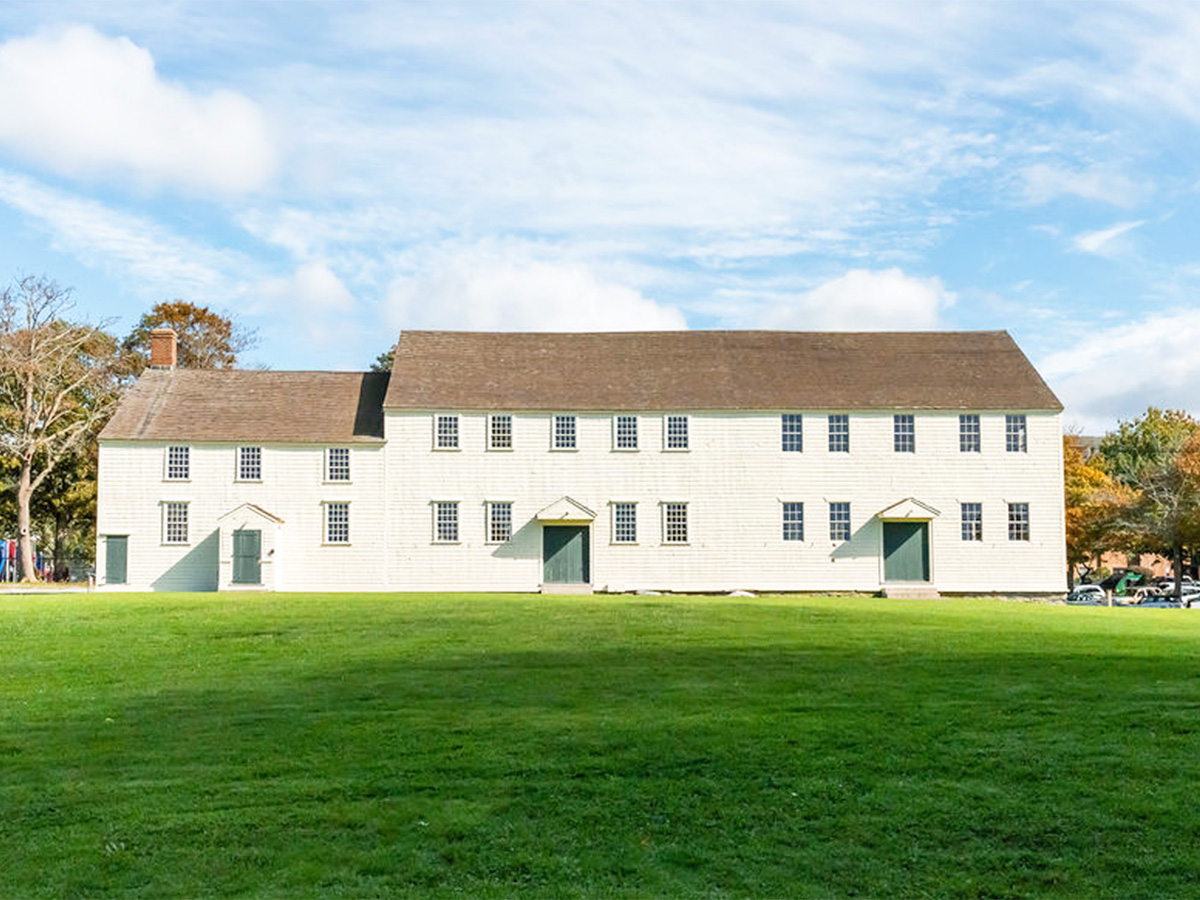
Ross, this is just great. Can’t wait to see the other tours. Do you include Stevens stone-cutting? Thanks again